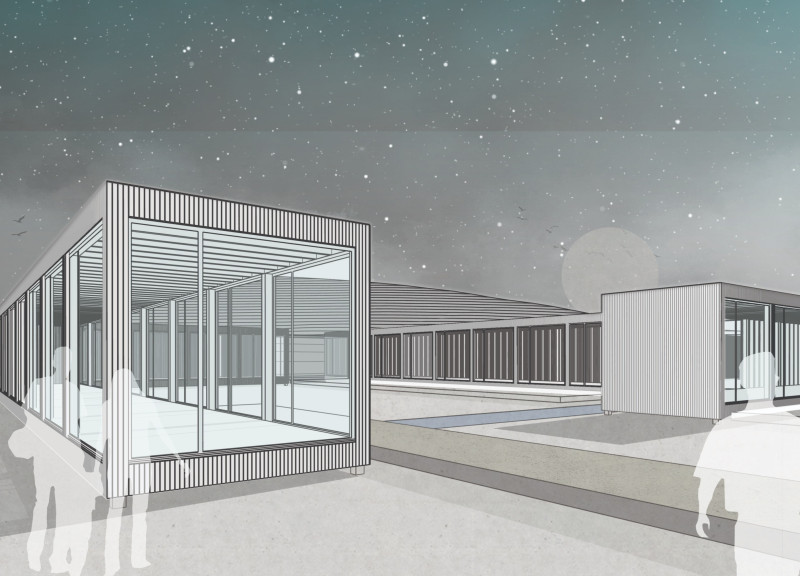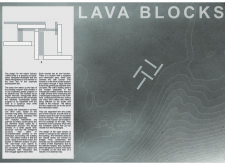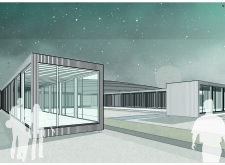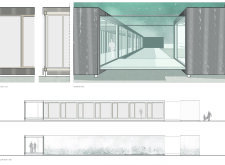5 key facts about this project
The Island Volcano Coffee Shop is a modular structure located next to a museum, designed to provide a welcoming space for visitors to enjoy coffee and social interaction. The layout consists of elongated rectangular forms arranged in a careful order on a flat site, creating both functional areas and inviting visuals. The concept aims to enhance community engagement while respecting the natural environment surrounding the facility.
Architectural Composition
The layout features a series of modules, each serving a unique purpose. The cubes are connected primarily along their long, narrow sides. This connection allows for easy movement and interaction among users, generating an open atmosphere throughout the various areas of the coffee shop. Glazed walkways serve to blend the indoor space with the outdoors, encouraging a sense of continuity with the landscape.
Programmatic Functionality
A key element of the design is the reception and information area, which includes a café counter and wide windows that open to a spacious inner courtyard. This courtyard becomes a social hub where visitors can gather comfortably. A separate module for café seating is positioned to overlook the untouched landscape to the northwest, providing a quiet spot for customers away from the main activity of the shop.
Spatial Relationships
Off to the left of the information area, offices and a warehouse are designed to maintain privacy, yet they still offer access to outdoor spaces. The two exhibition rooms of the adjoining museum are situated on the right side, carefully framing the inner courtyard and enhancing the experience for visitors. The arrangement of these spaces supports both functionality and the opportunity for exploration.
Materiality and Contextual Integration
The design incorporates white glazed larch formwork, which creates a distinct visual identity against the natural surroundings. This choice of material highlights the contrast between the building and the landscape, allowing the structure to reflect the changing colors and textures of its environment. Variations in height inspired by volcanic flows enhance the connection to the geographical setting and enrich the architectural narrative.
A notable detail is the height changes created by the bridges connecting the modules, marking a clear transition from the built environment to nature. These thresholds not only facilitate movement but also deepen the relationship between architecture and its natural surroundings.






















































